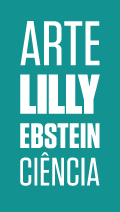Revolution of 1932
AND THE STORY OF A HOSPITAL
-
 Lilly Ebstein | Clique para ver +
Lilly Ebstein | Clique para ver + -
 Faculdade de Medicina | Clique para ver +
Faculdade de Medicina | Clique para ver + -
 História | Clique para ver +
História | Clique para ver +
An article that reports the action in a war hospital during the Revolution of 1932, by Alipio Corrêa Netto, Eduardo Etzel and Francisco Cerrutti, was illustrated by Lilly.
The School of Medicine got involved in the Constitutionalist Revolution of 1932, just as the School of Law and the Polytechnic School and other institutions that turned the 1932 cause into a “Paulista cause”. (NT: Paulista = relative to the State of São Paulo). Lilly illustrated the article “Cirurgia de Guerra no Hospital de Sangue de Cruzeiro” [War Surgery at the Blood Hospital in Cruzeiro], by Alipio Corrêa Netto, Eduardo Etzel and Francisco Cerrutti, published in 1934 in the Annals of the School of Medicine of São Paulo.
The article is about the experience of the three physicians who set up the hospital in the city of Cruzeiro, close to Minas Gerais. The physicians reached the site on July 6, 1932 and organized a field hospital with 65 beds. According to what the authors wrote: “As soon as the armed movement in favor of the country’s constitutionalization erupted in São Paulo, there was a need to organize a hospital, in Cruzeiro, to serve a fairly big semicircular frontline located in the north zone of the State of São Paulo, in the Paraíba Valley. Having presented ourselves at the Sanitation Service to provide medical services at one of the frontlines, we were immediately sent to Cruzeiro”.
The field hospital had two large wards, for light wounds and critical surgery. There was also a ward with seven beds for the officers. The wounded could be sent to the Santa Casa de Misericórdia. “This arrangement was broadly announced as being a plan designed and studied before the combats, so as to provide care to the wounded at war in the region where such a combat was unheard of”, wrote André Mota and Marco Cabral dos Santos.[1]
The hospital worked during 58 days, from July 16 to September 12, 1932 and in this period, 1,006 people were hospitalized for surgery of which 588 wounded at war and 418 men of the armed forces suffering from surgical problems (fractures, accidental wounds and others). With the 422 patients referred to the outpatient ward, 1,428 medical services were performed. The fighting was violent, wrote the physicians. One of the sites, the Batedor Ranch, “was a disputed position which became famous in street conversations because of the violence, it was said, of the fighting being waged there. The newspapers described true hand-to-hand combat where all weapons were brought to the field”.[2]
[1] Mota, André e Cabral dos Santos, Marco. São Paulo 1932 Memória, Mito e Identidade. São Paulo, Alameda, 2010, p. 142.
[2] Corrêa Netto, Alipio; Etzel, Eduardo e Cerruti, Francisco. “Cirurgia de guerra no Hospital de Sangue de Cruzeiro”. In: Annaes da Faculdade de Medicina da Universidade de São Paulo, Vol. X, 1934, Fascículo 1º, pp. 62 e 63.aulo, Vol. X, 1934, Fascículo 1º, pp. 62 e 63.
Lilly Ebstein Lowenstein (1897-1966) led a life between science and art, drawing and taking photographs in the fields of Medicine and Zoology. In her work, Lilly combined her technical knowledge of photography and drawing, the study of the sciences and a remarkable talent for aesthetics. She was born in Germany and studied at the Lette-Verein School in Berlin from 1911 to 1914. In 1925, she immigrated with her husband and two children to São Paulo. In 1926, she became an illustrator and photomicrographer at the Illustration and Photography Department at the School of Medicine (USP, as of 1934), which she headed for thirty years after 1932. Lilly collaborated at Instituto Biológico de Defesa Agrícola e Animal (the Biological Institute for the Defense of Agriculture and Animals), from 1930 to 1935, namely in the Avian Pathology Department. A life with art dedicated to the research and dissemination of science.

